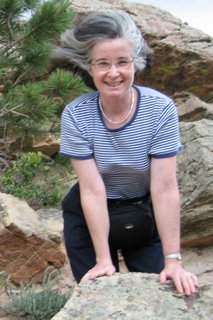Wednesday, June 28, 2006
How Art Made the Mini-Series
V.S. Ramachandran, a professor at the University of California, San Diego, conceded that until 10 years ago, he had "no interest in art" but he nevertheless seemed convinced that he had come up with a brilliant new insight when he hypothesized that prehistoric Venus figures have exaggeratedly large breasts and buttocks because men find those features attractive. An expert in the behavior of baby seagulls (which he analogizes to the behavior of artists), he really should get out more---to museums.
This week's first installment in the five-part series, about representations of the human body, said nothing cogent about "How Art Made the World" (admittedly a catchy title), but instead argued for the joint influence of human "hardwiring" and cultural differences on artistic styles: "Culture," we are told, "is king." (Double-"duh") Too often, the silent eloquence of masterpieces is upstaged by clever, hyperactive video gimmickry, to make the art more "interesting."
The series' peripatetic host, Nigel Spivey, a lecturer on classical art and archaeology at Cambridge University, is engaging and attractive, with a body type more stylistically suited to the svelte images in Egyptian relief (for which he modeled, in a digitally altered pose) than to the buff ancient Greek wannabes in the show's extended live beefcake segment (ludicrously accompanied by the Noel Coward song, "Mad About the Boy").
Heterosexual male viewers must have been disappointed that there was no equal-time cheesecake segment to exhibit living embodiments of the prehistoric Venus ideal. Maybe next week.
For me, the series worked best as a travelogue: It made me long to visit Egypt! And I'm looking forward to revisiting Altamira on the tube next week. They will also be discussing Lascaux. Did they have better luck getting access to the original Lascaux cave than I did?
